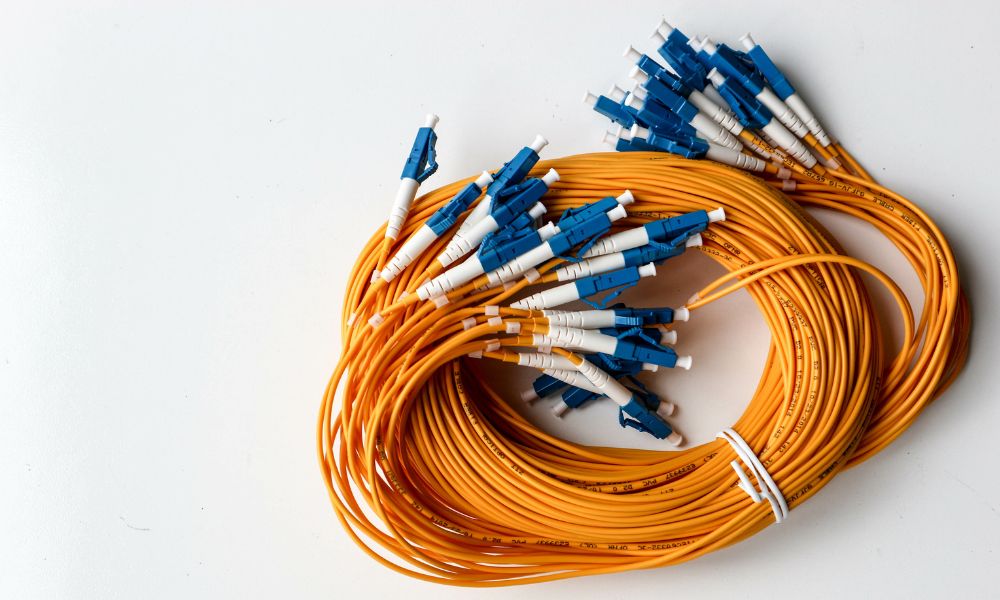
Fiber optic networks are reliable resources for many operations using telecommunications and data transfer, and many fiber optic cables require connectors in these networks. Fiber cable connectors are important for fiber optic technology and have various functions to help you stay connected. Read on to learn more about the functions of common fiber cable connectors and what they can do for your network.
Standard Connectors (SC)
Sometimes referred to as a square or subscriber connector, the SC is one of the most common fiber optic connectors for LANs, SANs, and WANs, thanks to its moderate cost and easy installation. The square-shaped stick-and-click connection makes implementation easy and reliable for most networks.
The locking tab creates better security and keeps the cable in place. Standard connectors are simpler than others and mitigate return loss for high-precision signals, making them optimal choices for typical and advanced networks.
Lucent Connectors (LC)
This single-mode fiber optic cable has a push-pull design for simple connections. This cord gained its name from Lucent Technologies.
The LC is a miniaturized version of the SC and serves the purpose of a smaller connector for high-volume networking to take up less room in high-density panels. The LC works well in networks with a Fibre Channel Protocol with larger components, such as SCSI converters. They can make a convenient connection with less space.
Ferrule Core (FC) Connectors
A device with vibration resistance is necessary for a quality connection. This is especially important in an environment with devices that emit great vibrations, such as server rooms and data centers with numerous PCs. The threaded body of the FC connector functions as a vibration-resistant device that holds the cable in place.
FC connectors are useful for single-mode fiber optics that provide a stable connection for its singular beam. These connectors aren’t as common as SC and LC because of their function in high-vibration environments. Still, they are reliable in many networks.
Mechanical Transfer Registered Jack (MT-RJ) Connectors
The MT-RJ connector is similar to the RJ45 connector used for Ethernet cables due to its lock-in tab that keeps the cord in place. Given their size, they function well in small devices and use only two fibers.
The MT-RJ is popular in many networks because of its small size, lower cost, and high efficiency. These connectors typically work well for multi-mode and single-mode cables.
Straight Tip Connectors (ST)
A straight-tip connector has an old design with a ferrule inside the housing. The longer tip and keyed slot connect it to the fibers and remain aligned. While these connectors are old and have less functionality than most square-bodied connectors, networks still use them for multi-mode applications because of their cost and simple installation and disconnection.
Numerous connectors work well for fiber optic networks and have different functions and purposes. Understand the functions of common fiber cable connectors, and use them in your fiber optic networking for the most efficient connections.



